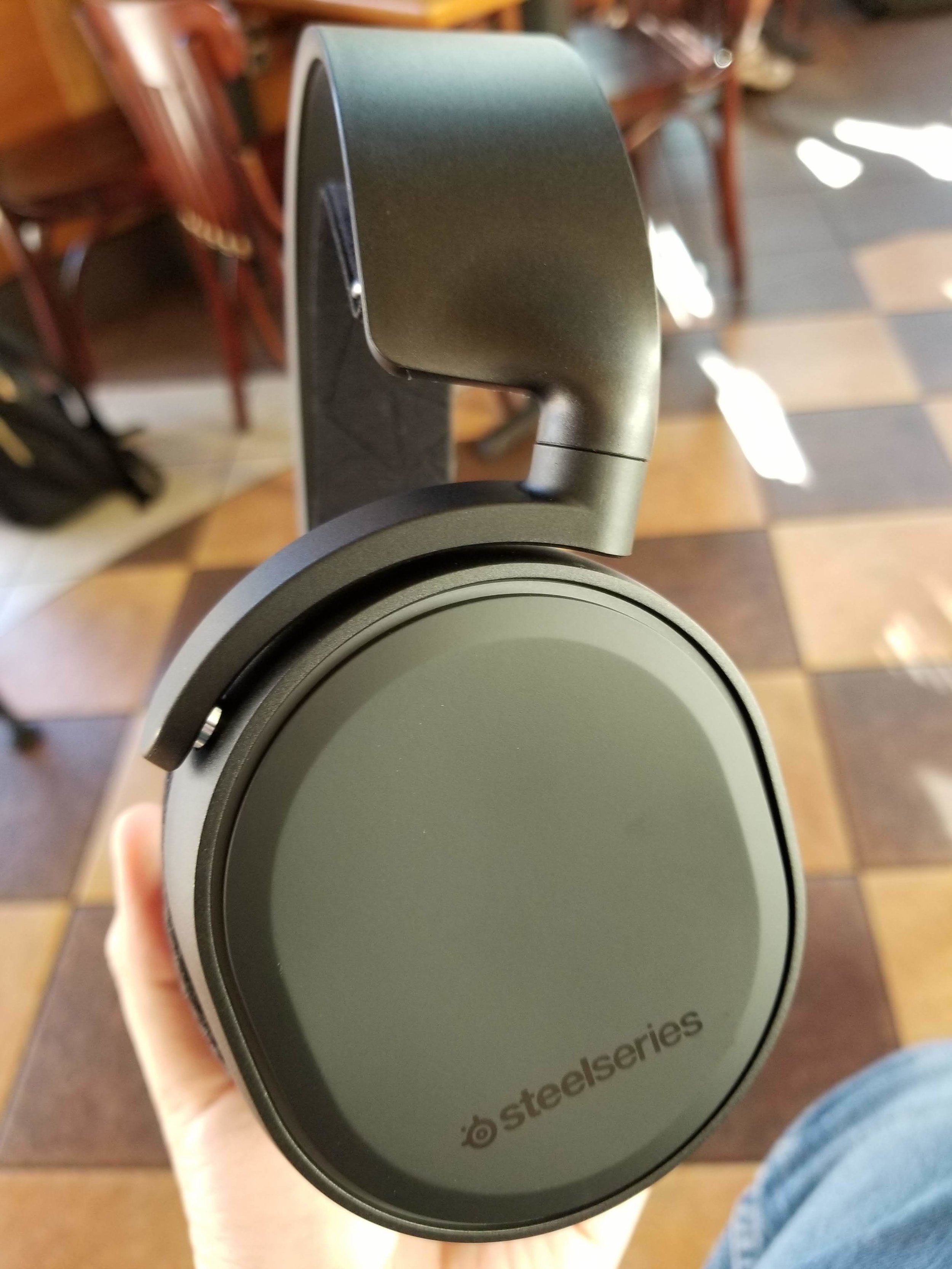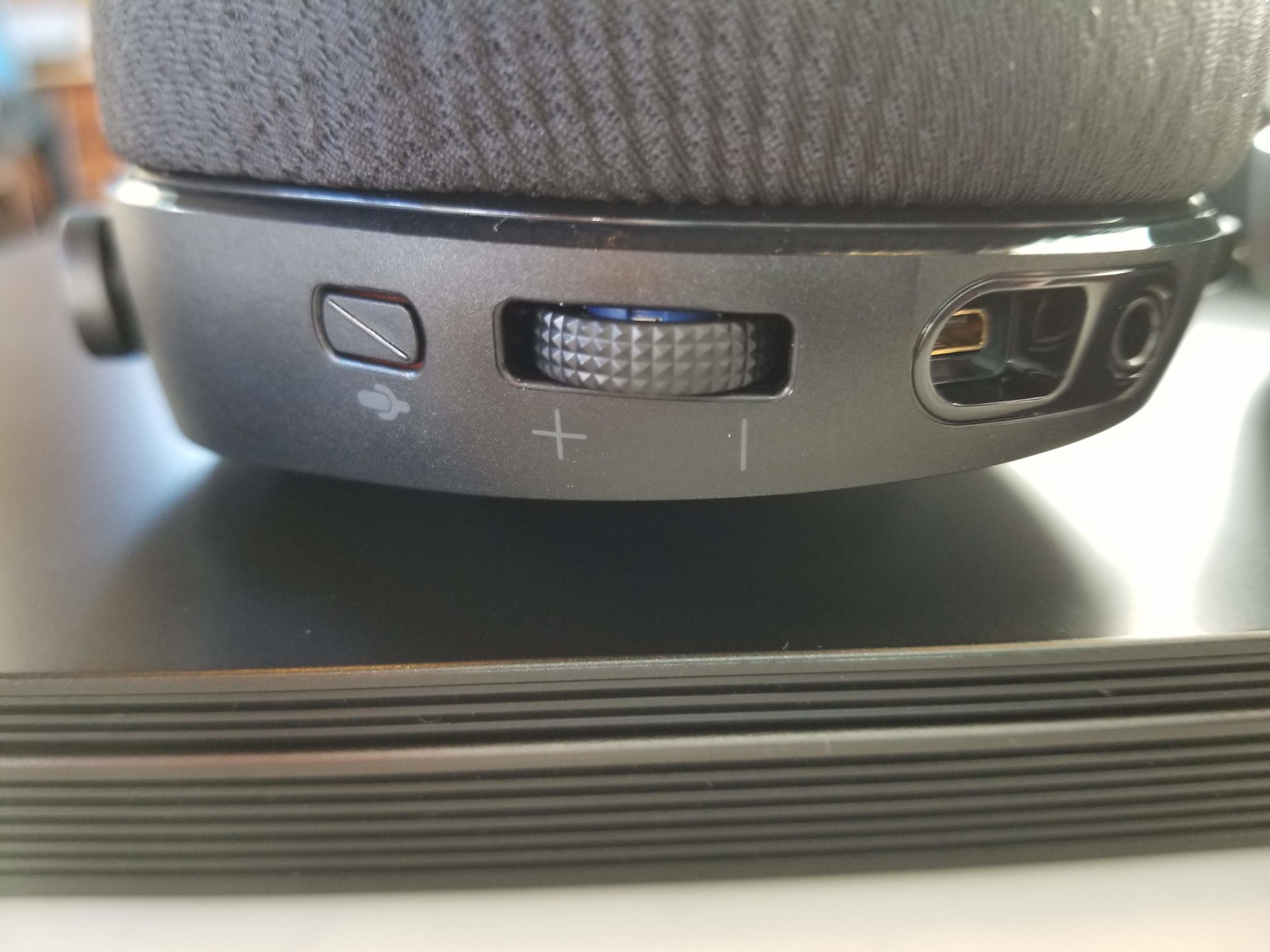Steelseries Arctis 5 2019 Edition Gaming Headset Review
Two years ago, Steelseries surprise-launched the Arctis into the world. At that time, gaming headsets were still largely in two camps: The HyperX Cloud II, and cheap plasticky nonsense with too much bass. Steelseries learned the lessons of HyperX’s best-seller, and mixed it up with a wide range of design changes, a really nice microphone, and an eye towards value.
In 2018, the market’s a lot different.
The spirit of the Cloud II has echoed into numerous products. If you want a quality-sounding gaming headset at 99 bucks, you’ve got a huge pile of options. There’s the Cloud Alpha, the G Pro, the Kraken V2…and many others. No longer is the market just a bunch of poorly-built muddy bass cannons.
Even Steelseries themselves moved on with this year’s Arctis Pro, a feature-packed headset with an eye towards mimicking the sound signatures of ~$200 audiophile headphone products…and a strong marketing focus on high resolution audio that I found strange.
I was surprised when Steelseries announced a revision of the base Arctis lineup just a few months after the Pro. I probably shouldn’t have been; it’s common for headset products to get a refresh every 18 months or so. But I still wasn’t expecting it. I didn’t think there was much more they could do with it, short of a brand new product that would risk undercutting the Pro.
The Arctis 5 2019 manages to be both better enough than the original to justify its existence, and worse enough than the Pro to justify its lower price. But its place in a crowded market isn’t that clear. It’s just as “very great” as several other big players at this price, and Steelseries is banking that their still-unique design and new look is going to be enough to sway you.
OVERVIEW
The Arctis 2019, just like its predecessor, is available in 3 different flavors: 3, 5, and 7. The 3 and 5 are wired, and sell for $79 and $99, and the 7 is wireless at $149.
I bought an Arctis 5, because that’s the one I started with 2 years ago.
The 3 has a basic 3.5mm cable and no other extras. The 5 adds RGB lighting and a small DAC/Amp/Game Chat Balance Knob that works best on PC. The 7 works both wired and wirelessly thanks to its PC-centric USB receiver, and it also borrows the new more curved metal headband from the Arctis Pro.
All three models have new ear pads that are thicker than the originals. And the same speaker drivers this series has had since 2016. At the time, they were the nicest drivers Steelseries had ever put into a headset…but that crown now belongs to the Arctis Pro.
SOUND QUALITY
These sound almost exactly like the original Arctis 5’s. They have a sound that’s brighter and more detailed than you might be expecting, sub bass that’s slightly lacking, and a bass hump that’s a little closer to the midrange than I might otherwise like. Thankfully, the midrange escapes unscathed, with relatively clean, natural performance. And the treble is not at all harsh or fatiguing.
I’d describe their sound as a midpoint between pleasant and detailed. In 2016, this was straight-up revelatory. I was so used to gaming headsets sounding kind of muddy and indistinct; the Arctis was a shot of detail right to the brain.
In 2018 though, I’ve heard a lot of other great-sounding gaming headsets. The Cloud Alpha has more oomph in the bass and more sparkle in the treble, while retaining beautiful midrange performance. The G Pro has a similar cleanliness. The Plantronics RIG 400 has an airy, detailed sound at half the price point.
And what about the Arctis Pro? Yes, it’s more expensive…but its sound completely fixes the small flaws the original Arctis had. The bass is smoothed out and more pronounced across the range. The upper midrange is more natural and powerful, and the treble response is cleaner and sharper overall. Side by side the improvement is clear.
Don’t get me wrong, the Arctis 2019 still sounds very good. But it’s no longer in a class by itself. It can no longer exclaim “My sound is the best at this price…and check out all my other features, too.” Instead, it has to rely more on those features and its design to sell itself to you.
It’s great that the general audio quality of gaming headsets has improved dramatically in the last two years. But it makes the choice a little less clear-cut if you’re purely here for audio performance. If bass is your favorite thing in the world, the Arctis will underperform expectations. If you’re an audiophile seeking the most accurate sound possible in a $99 gaming product…the smoother midrange of the Cloud Alpha might be more to your tastes.
Hey, but what about the “improved bass response” that Steelseries touted in their launch materials for this new version? Well, it’s technically true. The 2019 Arctis has a teensy tiny bit more bass response, though it seems more focused in that mid/upper bass region than in the slightly lacking lowest registers. And it’s almost certainly due to the newly improved ear pad foam, not any major tuning changes.
That foam does at least ensure that the Arctis maintains its position near the top of the comfort tower.
COMFORT
Yes yes yes. This has all the comfort. The biggest change in the 2019 Arctis models is the addition of more foam to the ear pads. Not only that, it’s a good memory foam, with a pleasantly squishy quality to it. Many users had issues with their ears touching the insides of the cups on the older pairs. That should be all but eliminated now.
The Arctis 5 2019 is light and pillowy on my giant head even at the default tension setting for the headband. I just plopped it on and I was good to go. My ears don’t touch anything, and after a few minutes, the headset basically disappears into the background of my thoughts.
Now, the Arctis Pro is also quite comfy…but its headband has a stronger clamp to it, its foam is a bit stiffer, and its cloth ear pad coverings are a bit thicker and more coarse. There’s a trade-off there. The 2019’s softer fabric and squishier pads feel a bit better on my head…but they also isolate about 20 percent less outside noise.
BUILD/DESIGN
Imagine the old Arctis, but painted with an Arctis Pro brush. Gone are the fun shocks of color contrast in the headband strap, replaced with an all-black design. Gone is the RGB lighting that emanated from the Steelseries logo on the ear cups, leaving only a light-up rim. Gone is the two-tone look of the headset frame, replaced with black and some more black.
The build isn’t as drastically different from the old model. It’s still a largely plastic affair with metal ear cup hinges and a couple of visible seams along the top of the headband. The ear cup backs are still rubberized, which is nice, but you can’t remove them like on the Arctis Pro.
Even the packaging fell victim to the new industrial design, with a much thinner, more basic look that removes many of the funky colors and angles that adorned the old box. On the plus side it makes the new models stick out on the shelf compared to the old stock, but I can’t help but miss the fun that the old design had.
The old model looked sleek enough to pass for a normal headset in public, and the new one is that much more “boring.” No one will ever know you’re wearing a gaming headset unless you pull out the boom mic.
The modular cable design from the original models is back, with the black cable from the Arctis Pro.
DTS HEADPHONE: X 2.0
New to the 2019 models is the latest version of the DTS Headphone X surround software. It’s a great implementation, available only on PC with the 5 and 7 models. Owners of the old models can download this update for free.
Unlike on the Arctis Pro, you get three options for virtual listening rooms, and three options for stereo expansion. This is great, and I hope these get added to the GameDAC at some point through an update.
MICROPHONE
Steelseries uses a nearly-unchanged microphone on the Arctis 2019, though it does get a couple of small improvements even over the Pro. The boom arm itself is more pliable and stays in place much more readily than the old one. Also, it appears that they’ve incorporated a basic pop filter into the body of the mic. Before, they sold a foam windscreen for a few bucks (that Pro owners get for free). The integrated solution is better, as you don’t need to keep track of a little foam thingy.
The actual performance of the microphone is largely identical to the great mics on every other Arctis headset. Here’s a couple of tests I recorded: one at home using the included knob DAC, and one straight into my MacBook at a coffee shop.
FEATURES/EXTRAS
The Arctis 5 2019 includes the same cable that comes with the Pro. It has one USB connection that attaches to the included game/chat balance knob, and an adapter for 3.5mm use. You also get the knob/DAC/thing I keep mentioning, which has a totally fine sound but none of the features or connectivity options of the much more expensive Steelseries GameDAC. The knob will output audio from PC, Mac, and PS4 systems, but only comes fully to life paired with the Steelseries Engine software in Windows. DTS support is limited to Windows machines.
The inline volume wheel and mic mute button on the back of the left ear cup are both nicer than before, and nicer-feeling than even those on the Arctis Pro. The volume wheel is stiff and hard to accidentally turn.
The packaging is basic feeling, a cardboard outer box with a plastic tray inside, and the rendering on the back shows the headset connected to the wrong side of the knob, with the hardwired side that’s supposed to connect to your PC magically connecting to the Arctis. Oops!
FINAL THOUGHTS
The 2019 Arctis lineup is almost the same headset that was launched in 2016, but with nicer ear pads and more black. The 7 gains a nicer headband, the 5 and 7 get better DTS software, and the 3 loses the old Steelseries surround software in favor of Windows Sonic.
Is this worth the upgrade if you have the original model? No. Not unless you have issues with your ears touching the insides of the cups. And even then, depending on your audio tastes, you might be better served by one of the many products launched in the last two years. Or you could just wait till Steelseries offers these ear pads for sale on their site and pop some onto your older pair.
Is this worth buying over the Pro? Well. That’s a little tougher. It’s not as feature-rich, and it doesn’t sound quite as good…but the ear pads are very nice, as is the much lower price. If you’re primarily a PC gamer and you don’t need the additional features of the Arctis Pro, I think the 2019 Arctis line represents a better overall value with still-very-good sound and exceptional comfort.
The 2019 Arctis 5 is an objectively-better headset than its predecessor that thankfully keeps the same price point of the original. However, outside of its new look…the most notable changes are better ear pads and a slightly more user-friendly mic.
I’m glad it’s not totally identical to the old one, and I’m glad Steelseries learned some lessons from the design of the Pro. But it’s not as exciting as the originals were in 2016.













